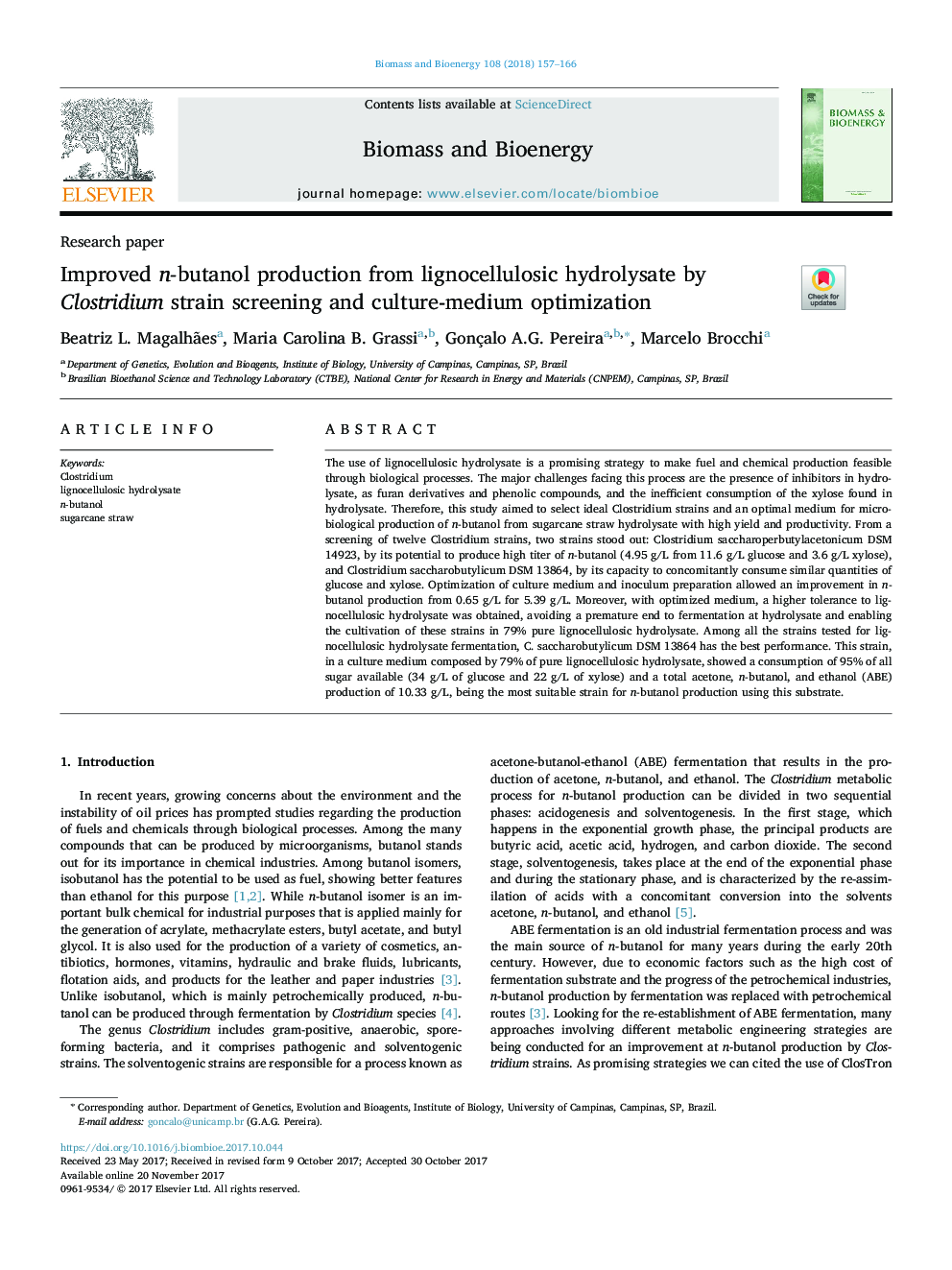| Article ID | Journal | Published Year | Pages | File Type |
|---|---|---|---|---|
| 7063053 | Biomass and Bioenergy | 2018 | 10 Pages |
Abstract
The use of lignocellulosic hydrolysate is a promising strategy to make fuel and chemical production feasible through biological processes. The major challenges facing this process are the presence of inhibitors in hydrolysate, as furan derivatives and phenolic compounds, and the inefficient consumption of the xylose found in hydrolysate. Therefore, this study aimed to select ideal Clostridium strains and an optimal medium for microbiological production of n-butanol from sugarcane straw hydrolysate with high yield and productivity. From a screening of twelve Clostridium strains, two strains stood out: Clostridium saccharoperbutylacetonicum DSM 14923, by its potential to produce high titer of n-butanol (4.95Â g/L from 11.6Â g/L glucose and 3.6Â g/L xylose), and Clostridium saccharobutylicum DSM 13864, by its capacity to concomitantly consume similar quantities of glucose and xylose. Optimization of culture medium and inoculum preparation allowed an improvement in n-butanol production from 0.65Â g/L for 5.39Â g/L. Moreover, with optimized medium, a higher tolerance to lignocellulosic hydrolysate was obtained, avoiding a premature end to fermentation at hydrolysate and enabling the cultivation of these strains in 79% pure lignocellulosic hydrolysate. Among all the strains tested for lignocellulosic hydrolysate fermentation, C. saccharobutylicum DSM 13864 has the best performance. This strain, in a culture medium composed by 79% of pure lignocellulosic hydrolysate, showed a consumption of 95% of all sugar available (34Â g/L of glucose and 22Â g/L of xylose) and a total acetone, n-butanol, and ethanol (ABE) production of 10.33Â g/L, being the most suitable strain for n-butanol production using this substrate.
Related Topics
Physical Sciences and Engineering
Chemical Engineering
Process Chemistry and Technology
Authors
Beatriz L. Magalhães, Maria Carolina B. Grassi, Gonçalo A.G. Pereira, Marcelo Brocchi,
